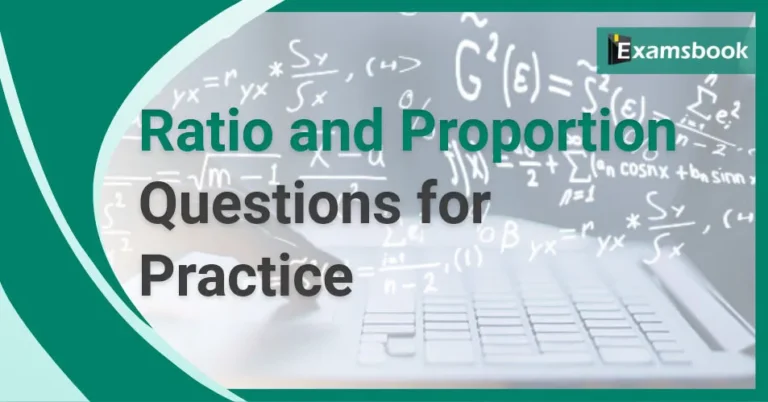Banking exams are known for their rigorous and comprehensive nature, testing various skills and knowledge areas. Success in these exams requires a thorough understanding of the concepts, diligent practice, and the ability to apply effective strategies under timed conditions. With adequate preparation and a positive mindset, candidates can successfully overcome the difficulties of banking exams and attain their aspiration of a fulfilling career in the banking industry.
Preparing for bank exams can be daunting, but mastering ratio and proportion questions can significantly boost your score. These questions are a crucial part of quantitative aptitude sections in bank exams. This blog will discuss essential strategies to crack these questions effectively.
Simplify Ratios
One of the most effective strategies is simplifying ratios before solving the problem. Simplified ratios are easier to work with and can often reveal patterns or relationships that are not immediately obvious. To facilitate a ratio, divide both terms by their greatest common divisor. This process makes the calculations easier and reduces the chances of making errors. Always check if it can be simplified before proceeding with further calculations.
Cross-Multiplication for Proportions
Cross-multiplication is a powerful tool when dealing with proportion problems. It helps find unknown values by transforming the proportion into a simple equation. For example, if you have a proportion like a/b = c/d, you can cross-multiply to get ad = bc. This method is straightforward and reduces complex problems into manageable calculations. Practice cross-multiplication regularly to make it a second nature when solving proportion problems.
Unitary Method
The unitary method is versatile and can be applied to various problems. It involves finding the value of a single unit and then scaling it up to see the required quantity. For instance, if five pens cost $10, the cost of one pen would be $2. This method is beneficial when dealing with price, distance, and other practical scenarios. Make sure to practice unitary method problems to enhance your problem-solving skills.
Practice with Real-Life Examples
Applying ratios and proportions to real-life scenarios can make learning more intuitive and engaging. Practice these concepts using examples like cooking recipes, mixing solutions, or comparing distances. This approach makes the problems more relatable and helps you understand how ratios and proportions work in practical situations. Real-life examples often present complex problems more straightforwardly, aiding better comprehension and retention of
concepts.
Break Down Complex Problems
When faced with complex ratio and proportion problems, break them into smaller, more manageable parts. This approach can help you focus on one aspect of the issue at a time and prevent you from feeling overwhelmed. Solve each part step-by-step and then combine the results to find the final solution. This method also helps avoid common mistakes when dealing with large, intricate problems.
Use Shortcuts Wisely
Learning and applying shortcuts can save valuable time during the exam. For instance, knowing that if two ratios are equal, the sum of their numerators and the sum of their denominators will also form the same ratio can be a handy shortcut. However, ensure you thoroughly understand the logic behind any shortcut before using it, as incorrect application can lead to errors.
Mastering ratio and proportion questions is critical to succeeding in bank exams. You can significantly improve your performance by understanding the basics, simplifying ratios, using cross-multiplication, applying the unitary method, practicing with real-life examples, managing time effectively, maintaining regular practice, and staying calm during the exam.
